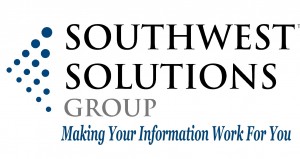Posts Tagged ‘Digital Conversion’
Planning Tips For Document Imaging Solutions
 When to Use Document Imaging
When to Use Document Imaging
Document imaging can be a powerful tool but is only a small piece of a records information management (RIM) system. Using document imaging solely for the purpose of solving problems is not practical. The most efficient and logical use of document imaging is for documents that have a high retrieval rate by multiple users, especially in remote areas. Making sure your application is right for document imaging is the first step in the process.
Planning to Image Documents
There are a few basic questions that should be asked (answered) before investigating the implementation of an imaging system:
- What documents do you want to image?
- What is the retrieval rate of these documents (how often are they accessed?)
- How many people access these documents?
- What do you see as the benefits of having these documents available electronically?
More often than not, if the answers to the first three questions are sufficient, determine if further investigation is sensible. However, the fourth question is vital in in starting to address the return on investment question that will undoubtedly come next.
 Solid Solutions for Document Imaging
Solid Solutions for Document Imaging
If having certain documents available electronically aids in the level of customer service, then you could well be on your way to implementing an imaging system. If, however, many of the benefits include issues such as “no more lost or mis-filed items”, then you are probably attempting to drink soup with a fork!
When used specifically to address issues of retrieval and multiple accesses, document imaging is a solid solution. There are also times when certain documents are included in the imaging process as a convenience to upper management. This can be a valid solution for VP’s who have a heavy travel schedule and the need for vital documents on a regular basis. It also provides security for original vital documents without sacrificing access to the information these documents contain.
 Indexing Documents for Efficient Access
Indexing Documents for Efficient Access
If you do move forward with an imaging system, keeping the index system concise and as limited as possible keeps the system user friendly and cost efficient. Scanning documents is easy and scanners are relatively inexpensive. The question is will anyone ever be able to find the document after it has been scanned? Also, remember that you must put your files in order before you scan. An inefficient paper based filing system will translate into a messier electronic document system!
Retaining Documents After Scanning
As for keeping the originals, that depends on what is scanned. If only certain documents are scanned from a file and miscellaneous correspondence or other documentation must be kept, then you might as well keep the scanned original. What is more important is that both the paper and the image is part of a comprehensive retention schedule.
For more information on document imaging and retention scheduling, call us toll free at 1-800-803-1083 or visit www.ssgims.com!

Ensuring SUCCESSFUL Barcode, RFID and Digital Implementation

Barcode, RFID & Digital Technology Plan is KEY to SUCCESS
Innovation tracking and management technologies can make a huge difference in your bottom line whether it is for inventory, assets or records and information. The key to a successful implementation is identifying and improving the related business processes. Attaching a barcode or RFID tag to an item or putting document through a scanner is only a small part of the solution. Solution providers should be able to perform a survey and analysis of your existing system to first identify the root of deficiencies and provide a full life cycle overview. Process improvement in partnership with innovative technologies is the key to your return on investment and bottom line improvements. It is also important to identify which technology is best for your business function. Asset Management, Inventory, Digital Document and Archive Management are key business units that can benefit from a single and/or a combination of technologies and many systems can be expanded to include multiple departments or enterprise-wide. Technology can be a powerful tool when implemented to enhance your overall business function and work flow.
Click here to learn more about our Total Solution Integration & Implementation Services



